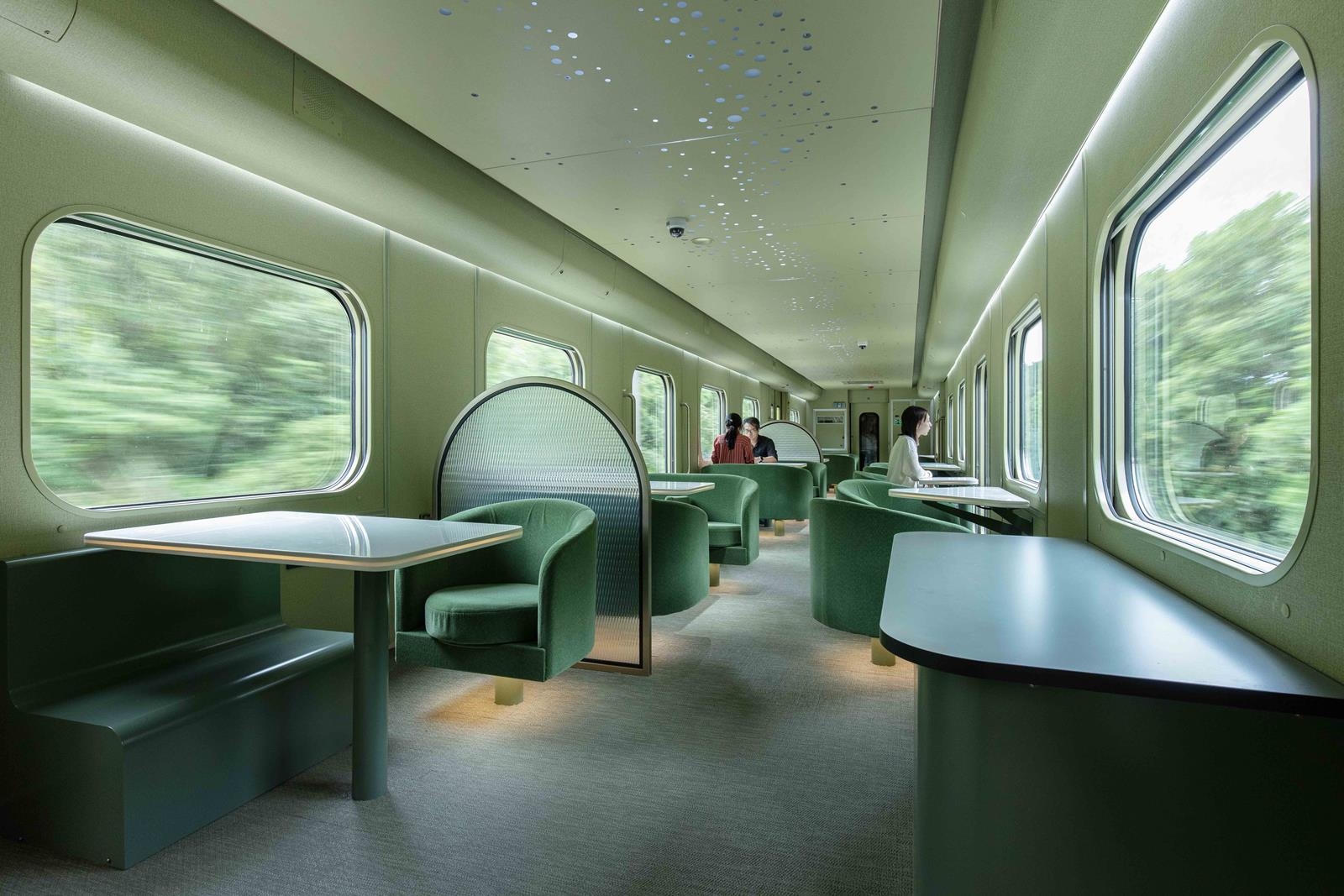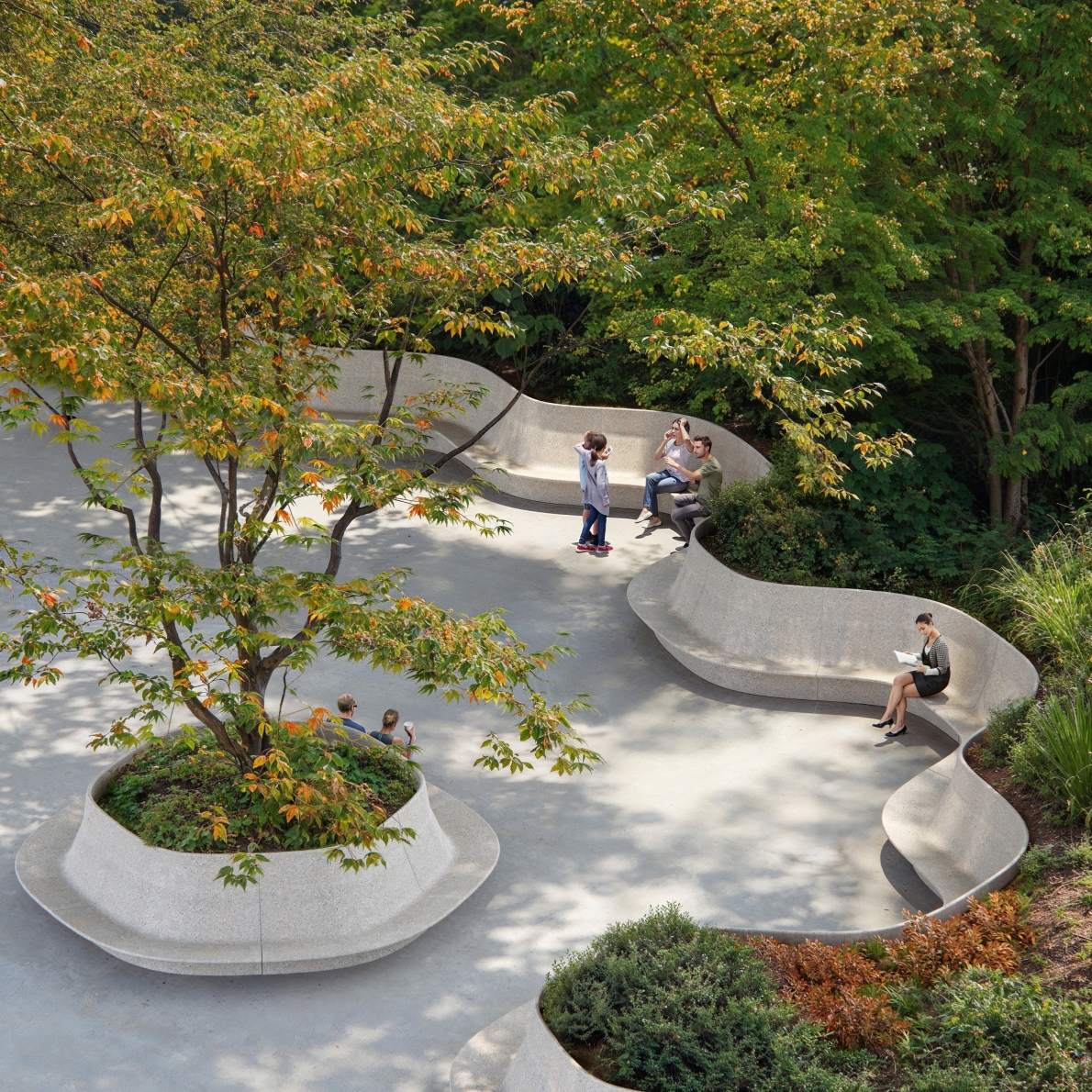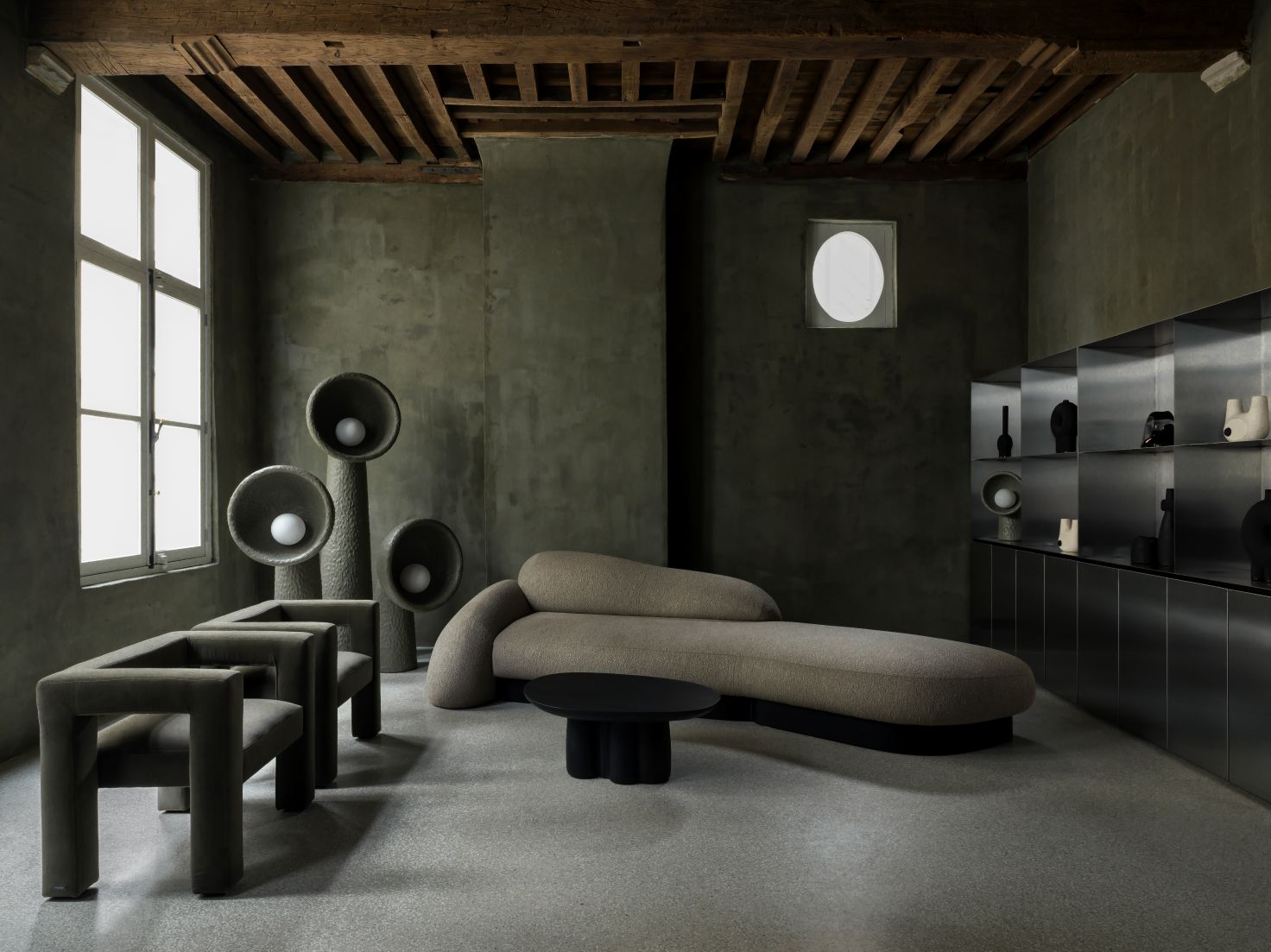Welcome to an inspiring interview with Joe Luttwak, a design maverick, songwriter, and environmental enthusiast. Joe’s journey began with a quest to make a guitar with the performance of carbon fiber and the sound of old wood – without cutting a single tree or using any toxic inputs. And years later, they brought ekoa® to market. After receiving thousands of inquiries from designers who wanted to use their healthy, natural fiber composites, they introduced ekoa® eco-veneers and panels, enabling architects, designers, CMF professionals, and product designers to easily integrate renewable materials and products into their own designs. Co-founding Lingrove in 2014, Joe expanded ekoa®’s applications, from furniture to car interiors, addressing the urgent need to conserve high-quality wood and combat deforestation.
In this interview, Joe shares how ekoa® is transforming design, offering strength comparable to steel, cleanliness surpassing plastics, and aesthetics rivaling natural wood. We’ll also explore how Lingrove’s materials are shaping the future of sustainable design and their critical role in mitigating climate change. Join us for a glimpse into the world of innovative, eco-friendly materials and their potential to revolutionize design.

Can you share the inspiration behind your journey into the materials business and your quest for a wood-free travel guitar?
With very few exceptions, quality acoustic guitars and ukuleles are made of old-growth softwoods – like Spruce from Sitka Alaska and slow-growing hardwoods – read ancient trees from rainforests, some of which are over 1,000 years old. From a sustainability point of view, this is bad not just because of the loss of forest, but also because entire ecosystems can disappear when even one tree is cut.
Joe Luttwak, founder of Blackbird Guitars, is a serial entrepreneur and committed conservationist. He wanted to find a better way to make guitars; and so he set out to challenge the team: let’s make a sustainable guitar with the performance of carbon fiber and the sound of old wood – without cutting a single tree.
And years later, we brought ekoa® high-performance flax fiber composites to market, first in musical instruments.
After receiving hundreds of inquiries from designers who wanted to use our healthy, natural fiber composites, we developed ekoa® eco-veneers and panels for the A&D market, enabling architects, designers, CMF professionals, and product designers to easily integrate rapidly renewable materials and products into their own designs.
We spun out the company Lingrove to serve the A&D and green mobility industry with ultra-sustainable ekoa® veneer and panel products – for cabinetry, millworks, walls, and ceilings.
In 2013, you created ekoa®, the world’s first plant fiber composite. Could you elaborate on the innovative qualities that set ekoa® apart from other materials?
ekoa® can replace wood, plastics (like vinyl), and even metals in interior applications – from walls to ceilings, cabinetry and millworks, to dashboards in vehicles, and so on – with a low-carbon, clean air product that delivers a higher strength-to-weight ratio than steel; is stiffer than aerospace fiberglass; and is incredibly durable. Of great interest to the A&D community, ekoa® will even survive a 24-hour mustard stain test!
Lingrove, which you co-founded in 2014, focuses on expanding the applications of ekoa® beyond musical instruments. Could you share some key industries and products where ekoa® has made a significant impact?
ekoa® is being used in homes, offices, hospitality, and healthcare to replace laminates and wood veneers in caseworks, cabinetry, walls, and ceilings. ekoa® displaces carbon intensive products with high VOCs with a natural, low-carbon, clean-air, and high-performance product.
ekoa® Auto can replace decorative finishes – from wood to carbon fibers – in luxury auto interiors.
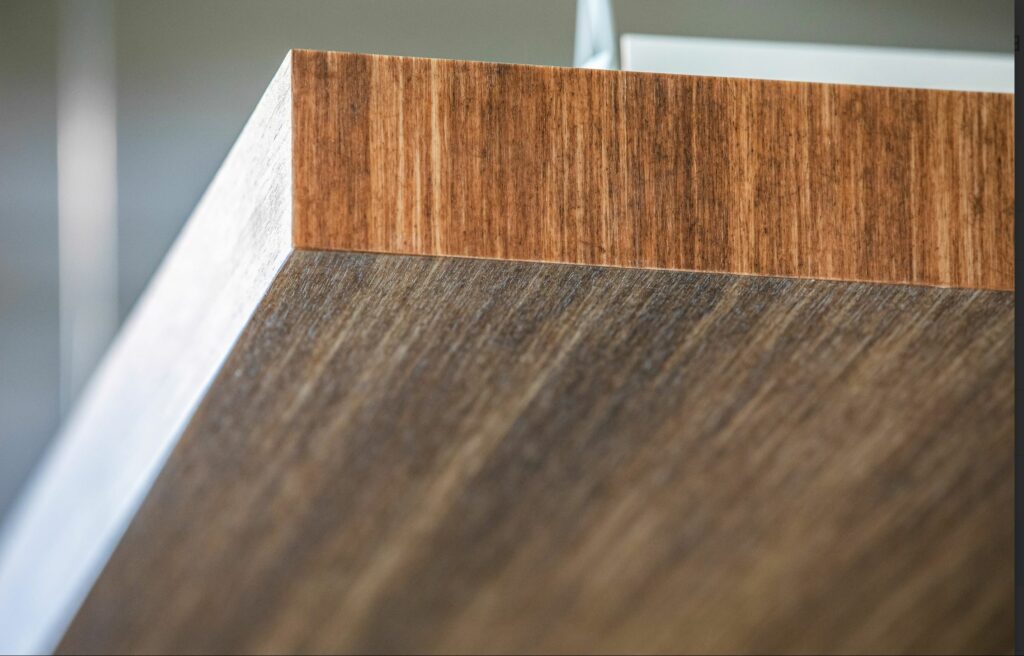
Could you discuss the role of ekoa® in furniture design and how it aligns with sustainable interior design practices?
As a natural fiber composite, ekoa® delivers greater strength along with the durability of a synthetic interior finish with the aesthetic and appeal of a natural material, making it a versatile and easy choice for sustainable furniture and interiors in general.
ekoa® aligns with sustainable interior design practices in several ways. First, it is made from rapidly renewable natural fibers from the flax plant that operates as an incredible carbon sink – which means it has a lower carbon footprint compared to conventional furniture materials, contributing to reduced environmental impact. (Flax fibers sink 1.4 tons of CO2 for every ton of fiber, from farm to factory gate). Second, ekoa® is a clean-air product: designers can be assured that they are designing healthier spaces when using Lingrove products.
Additionally, its durability means that ekoa®-based furniture can have a longer lifespan, reducing the frequency of replacements and resource consumption. Finally, ekoa®’s natural and organic aesthetics support biophilic design, creating interiors that connect occupants with nature, promoting well-being and sustainability simultaneously.
Overall, ekoa® offers a sustainable, aesthetically pleasing, and functional choice for eco-conscious furniture design.
Lingrove’s materials have applications in construction. What advantages does ekoa® offer in this field, particularly in terms of sustainability?
Un-fun facts: The built environment generates 40% of global CO2 emissions. Just three materials (concrete, steel, and aluminum) are responsible for 23% of GHG (principally from construction). On top of that, our rainforests and forests (and their hardwoods) are being depleted at rates that will end them entirely in our lifetimes if there is no change.
It’s amazing that we can transform carbon-negative plants like flax such that some day it can eventually replace steel, concrete, aluminum, and wood in structural applications, and therefore help reverse climate change. And, our natural flax composites have the potential to deliver structural solutions in the future.
Even now, with our semi-structural veneers and panels, we are displacing carbon intensive products and sequestering CO2. For example, 3,549 lbs of CO2 will be sequestered daily per machine, assuming Lingrove produces 20,000 square feet (1,389 lbs) of ekoa® per day on its production line. Replacing a mechanically equivalent amount of structural steel every year with the material from our pilot line would stop the release of 1769 tons of CO2, along with removing 83 tons of CO2 from the atmosphere through its inputs’ cumulative carbon sequestration (Bedford, 2017).
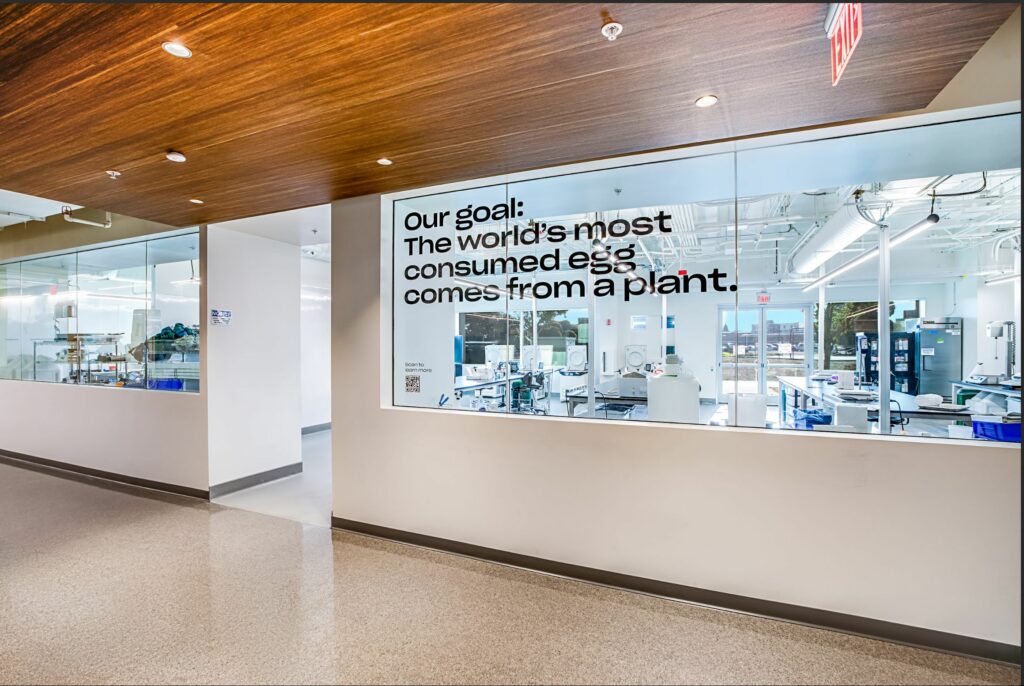
Lingrove’s mission is closely linked to addressing climate change. Can you share some insights into how natural fiber composites contribute to this cause?
Our mission is to do our part of reversing climate change by using rapidly renewable plants to replace the use of carbon-intensive timber, metals, and concrete in the built environment and mobility; and we’re doing that while making our built environment healthier and more beautiful.
Using carbon negative inputs like rapidly renewable flax fibers is an essential part of reducing the impact of construction and interiors. The flax plants that are used in our ekoa® products sequester 1.4 tons of CO2 for every ton of flax fiber (farm to factory gate). As well, flax grows quickly on small land plots with no need for irrigation; and it’s harvested every 90 days.
You can see that the rapidly renewable plants used in ekoa® are powerhouses for removing CO2 from the environment.
How do you envision the future of sustainable materials and design, and what role do you see Lingrove playing in it?
The future of sustainable materials and design will revolve around the core principles of clean air, low carbon emissions, regenerative products, and biophilic design. Lingrove’s role in this future is pivotal. By promoting natural fiber composites, we contribute to cleaner air while simultaneously reducing the carbon footprint associated with traditional materials like laminates and metals. Our materials, characterized by low carbon emissions, align with the imperative of reducing greenhouse gas emissions.
Lingrove’s commitment to regenerative products involves sourcing renewable materials and encouraging responsible manufacturing, mitigating the depletion of natural resources. This includes conserving forests and protecting biodiversity as a result. Furthermore, our natural products align with the principles of biophilic design, fostering a deeper connection to nature through sustainable, organic aesthetics and functional designs that harmonize with the environment.
Lingrove’s dedication to clean, low-carbon, regenerative, and biophilic principles positions us as a key driver in shaping a sustainable future where materials and design not only enhance human well-being but also contribute to a healthier planet.
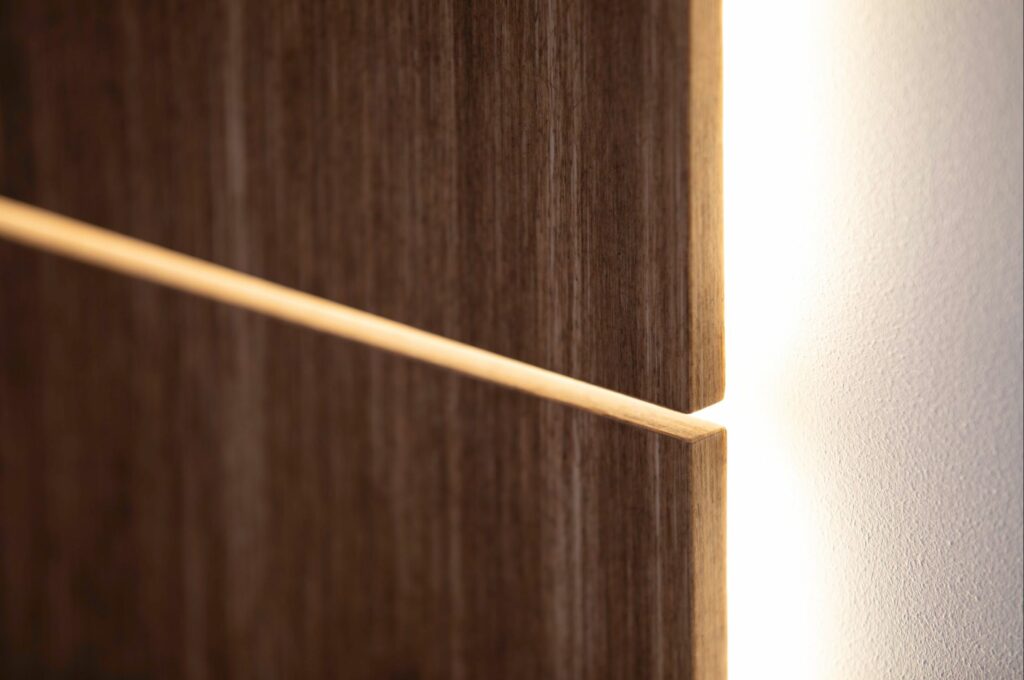
Lastly, can you provide any advice or insights for aspiring designers and entrepreneurs looking to make a positive impact through sustainable innovation in their respective fields?
When you realize that indoor air quality can be 100 times worse than outdoor air quality and that interiors can have the highest embodied carbon footprint over a building’s life cycle, it becomes clear that architects and designers are outsized influencers in addressing climate change and human health.
Our advice: Architects and designers have the power to make spaces healthier, safer, and sustainable. Remember that your material decisions really matter. Find and choose beautiful, high-performing, clean-air, and sustainable products like ekoa® to deliver healthy, regenerative, and planet-friendly spaces.


